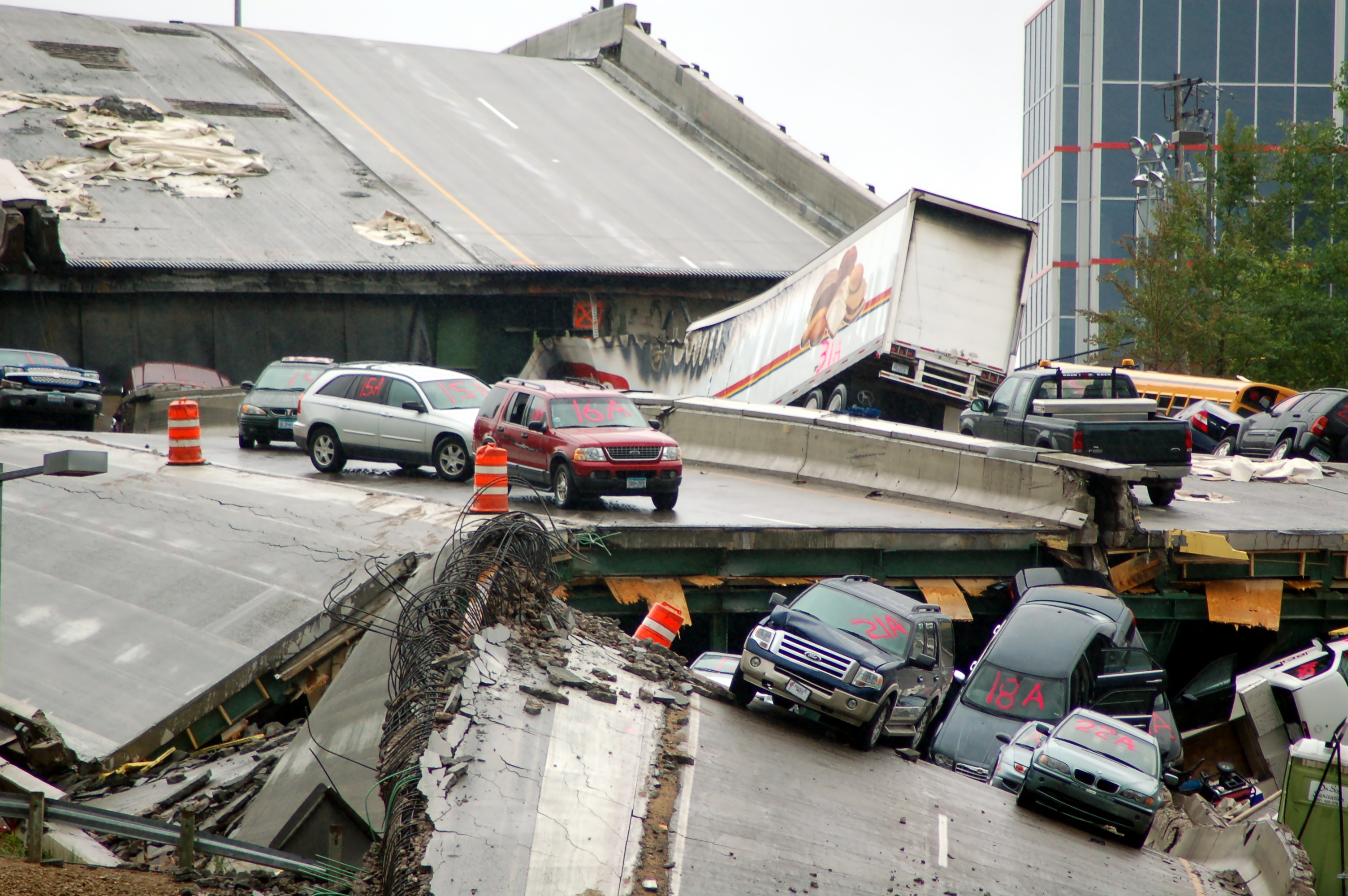Structured Steel Protective Coatings
Structured Steel Protective Coatings
Written by: Baril Coatings USA
Posted: September 10, 2024
Preserving the Backbone of Modern Architecture
In 2007, the I-35W Mississippi River bridge in Minneapolis, Minnesota, suddenly collapsed during rush hour traffic, resulting in 13 deaths and 145 injuries. While the primary cause was a design flaw, the National Transportation Safety Board (NTSB) report also highlighted significant corrosion in gusset plates as a contributing factor. This tragic event underscores the critical importance of protecting structured steel in our infrastructure.

Structured steel forms the skeleton of our modern world. From towering skyscrapers and expansive bridges to industrial facilities and sports stadiums, steel structures are everywhere. However, like all steel, these vital components are vulnerable to the relentless forces of corrosion. In this article, we'll explore the world of structured steel protective coatings, discussing their importance, types, and the latest advancements in the field.
The Vulnerability of Structured Steel
Structured steel is prized for its strength, versatility, and cost-effectiveness. However, its susceptibility to corrosion is a significant drawback. Corrosion in structured steel can lead to:
- Reduced load-bearing capacity
- Compromised structural integrity
- Aesthetic degradation
- Increased maintenance costs
- Potential catastrophic failures
Corrosion in structured steel often begins insidiously, hidden from view in joints, connections, or beneath other building materials. By the time visible signs appear, significant damage may have already occurred.
The corrosion process in structured steel follows the same electrochemical principles we've discussed in previous articles. The steel itself acts as both anode and cathode, while moisture from the environment serves as the electrolyte. In coastal areas or industrial zones, the presence of salts or pollutants can accelerate this process dramatically.
The Importance of Protective Coatings
Protective coatings serve as the first line of defense against corrosion in structured steel. A well-designed coating system can:
- Isolate the steel from corrosive elements in the environment
- Provide a barrier against moisture and oxygen
- Incorporate corrosion-inhibiting compounds
- Extend the service life of the structure
- Reduce maintenance costs over time
- Enhance the aesthetic appeal of the structure
Moreover, in fire-prone areas or applications, specialized coatings can provide critical fire resistance, buying precious time for evacuation and firefighting efforts.
Types of Protective Coatings for Structured Steel
The choice of coating system depends on various factors, including the environment, expected service life, aesthetic requirements, and budget. Here are some common types:
- Zinc-Rich Primers: These provide cathodic protection to the steel, making them excellent for corrosion prevention. They're often used as the first coat in a multi-coat system.
- Epoxy Coatings: Known for their excellent adhesion and chemical resistance, epoxies are widely used in industrial and marine environments.
- Polyurethane Coatings: These offer superior UV resistance and color retention, making them ideal for topcoats in exterior applications.
- Alkyd Coatings: These are economical and easy to apply, suitable for mild to moderate environments.
- Inorganic Zinc Silicate Coatings: These provide excellent corrosion resistance and can withstand high temperatures.
- Intumescent Coatings: These expand when exposed to high temperatures, providing fire resistance to the steel structure.
Latest Advancements in Structured Steel Coatings
The field of protective coatings is continuously evolving. Some recent advancements include:
- High-Solid Coatings: These contain a higher percentage of solid material, reducing VOC emissions and allowing for thicker application in fewer coats.
- Water-Based Coatings: As environmental regulations tighten, water-based formulations are becoming more popular, offering reduced VOC emissions without compromising performance.
- Self-Healing Coatings: These innovative coatings can repair minor damages automatically, extending the coating's service life.
- Nanocoatings: By incorporating nanoparticles, these coatings can achieve superior hardness and corrosion resistance.
- Smart Coatings: These can change properties in response to environmental stimuli, such as changing color to indicate corrosion underneath.
The Importance of Proper Application and Maintenance
Even the most advanced coating won't perform well if it's not applied correctly. Proper surface preparation is crucial – the steel surface must be clean, dry, and properly profiled to ensure good adhesion. This often involves abrasive blasting to remove mill scale, rust, and other contaminants.
The coating must then be applied according to the manufacturer's specifications, with careful attention to factors like temperature, humidity, and layer thickness. In many cases, a multi-coat system is used, with each layer serving a specific purpose.
Regular inspection and maintenance are also key to ensuring the long-term performance of the coating system. This includes:
- Regular visual inspections
- Prompt repair of any damages
- Cleaning to remove dirt and contaminants
- Recoating when necessary
Conclusion
As we've seen, protective coatings play a crucial role in preserving the integrity and longevity of structured steel. By investing in high-quality coatings and ensuring proper application and maintenance, we can significantly extend the life of our steel structures, reduce maintenance costs, and most importantly, enhance safety.
At Baril Coatings USA, we understand the critical importance of protecting structured steel. Our advanced coating systems are designed to provide superior protection against corrosion, UV damage, and even fire. We work closely with architects, engineers, and contractors to provide tailored solutions that meet the specific needs of each project.
Don't let corrosion compromise the strength of your steel structures. Contact us today to learn how our cutting-edge protective coatings can safeguard your assets and contribute to safer, more durable infrastructure.